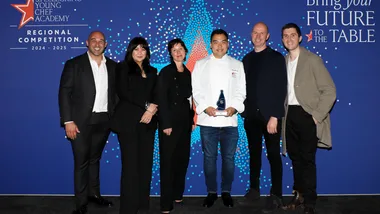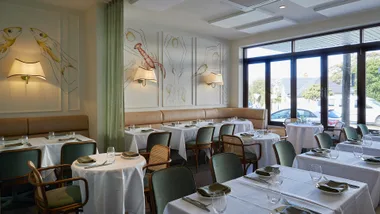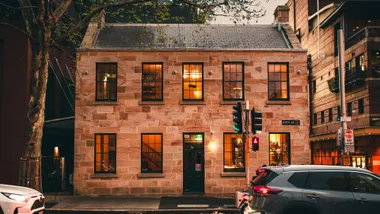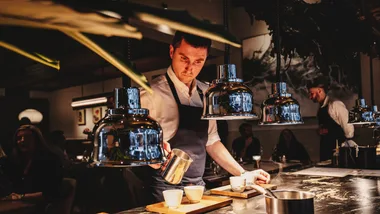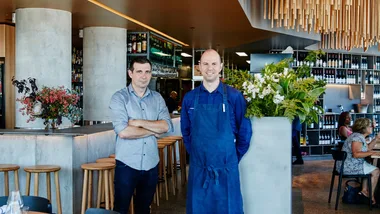A soup made with beef trimmings and leftover carrots may not sound like a dish you’d find on Rockpool’s menu, but today that’s what Neil Perry was serving to lunchtime crowds in Sydney’s Martin Place to support food rescue organisation OzHarvest. The chef was out to show home cooks that tasty meals can be prepared from ingredients that are often thrown away, contributing to the one in five bags of groceries Australian households toss each year.
The five most commonly wasted ingredients are everyday items including bread, milk, lettuce, bananas and meat.
“Where our parents and grandparents lived through the Depression, we’re surrounded by food,” OzHarvest CEO Ronni Kahn said. “We buy all these things thinking we’re going to cook, and then we eat out.”
Around the country, “Think.Eat.Save” events showcased dishes from the likes of Neil Perry, Matt Moran (Aria) and Dan Pepperell (Restaurant Hubert) using the top five most-wasted ingredients. These were sourced mostly from the restaurants’ by-product, which was vacuum-packed and frozen in preparation for the event today, or from OzHarvest’s food rescue operations.
“Chefs can’t afford to waste food, because the margins are so slim,” Perry said.
Today, the focus was on inspiring home cooks to think twice before tossing out food or buying fresh ingredients from the supermarket, and find creative ways to use up every ingredient in the fridge.

Perry’s soup took the excess trimmings from Rockpool Bar and Grill’s 36-month rib-eye steak to make a rich beef broth that was the base for his barley and vegetable soup, while Pepperell created a “nose-to-tail” potato and leek soup that used unpeeled potatoes and leek tops. Other suggestions for cutting food waste at home included freezing bread to make croutons and breadcrumbs later, stir-frying lettuce in XO sauce if it’s lost some of its freshness and turning over-ripe bananas into smoothies or ice-cream.
Up to 800 kilograms of unwanted bananas are collected from supermarkets by OzHarvest each day in Sydney, according to the organisation’s executive chef Travis Harvey, before being distributed to food charities. For today’s event, Harvey took inspiration from a Filipino recipe to make a ketchup out of excess bananas, which was spread on corn chips and handed around to the crowds gathered in the CBD location. Banana ketchup first came about due to a shortage of tomatoes in the Philippines during World War Two but is now seen in pantries and restaurants throughout the country.
OzHarvest has partnered with UN Environment in its effort to reduce the amount of food wasted around the world. In Australia, this number is four million tonnes.
Three tips from chefs for using leftover food
“Use the leftover bones of ducks and chickens to create a delicious master stock that continues to develop flavour over time.” – Dan Pepperrell
“Use leftover meat from a Sunday roast chook in a pesto spaghetti and then make a lovely chicken stock with the carcass of the chicken so nothing is wasted.” – Justine Schofield
“Stale bread is great for making bread and butter pudding – plus you can use up any milk that’s about to go off.” – Neil Perry

